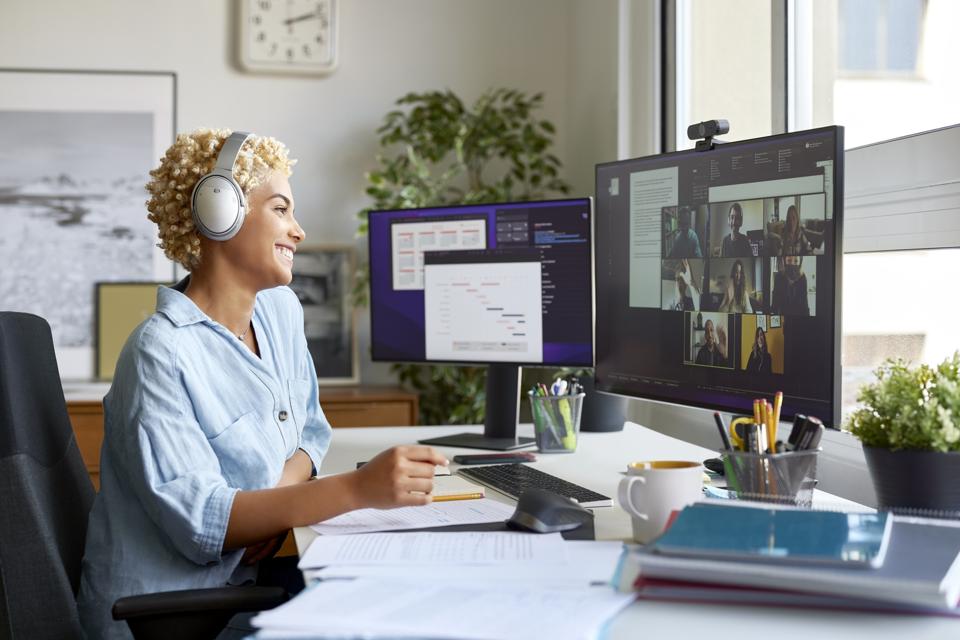Some companies are choosing to institute a return-to-office (RTO) mandate. Others are embracing flexibility and employee empowerment. While RTO companies are using in-office amenities to entice people, you can create a tranquil and productive environment at home that rivals any office through these five tips.
Prioritize Daily Routines
When working from home, it is important to create a routine that separates work from personal life. Set up and communicate boundaries if you share your home space with others. Even small things, like using a specific notebook and pen, will get you in the work mindset. Avoid waking up and rolling right over to your computer. Whether it’s journaling, meditating, exercising, or another self-care practice, starting with focusing on yourself will set the tone of a work-life balance throughout the day. As Jessica Padula, VP of Marketing & Head of Sustainability at Nespresso USA, mentions: “rituals can make it easier to channel motivation, focus, and find creativity…. it’s important for everyone to treasure their mornings and carry that mindfulness throughout the day.” In the physical office, it can feel easier to create boundaries through commuting and being in a physical space different than your home. Utilize the flexibility of remote working to capitalize on the freedom to design a day that uniquely supports your needs.
Put Out Top-Notch Coffee And Snacks
Drinking coffee and working are nearly synonymous. Padula elaborates on our desire to keep reaching for a great brew: “Busy Americans are drinking more coffee – we know from the National Coffee Association that daily coffee consumption is at a 20-year high in the U.S.” While some companies see offering snacks and coffee as an in-office perk to drive employees into the office, many are using it to protest return-to-office mandates through ‘coffee badging.’ Instead, set up a quality at-home coffee station for the ultimate work-from-home luxury. Use your brew time to truly take a break from the screen and enjoy your beverage. Many individuals feel too stressed or busy will avoid treating themselves, according to a study by Cornell SC Johnson College of Business published in the Journal of Consumer Research. Treat yourself to solid coffee and snacks – putting breaks in your schedule both fuel both your productivity and reset.
Don’t Ignore Ergonomics
Ergonomics is the practice of designing and arranging things so that people and tools interact efficiently and safely. In the workplace, having work items setup to be ergonomically correct means eliminating discomfort and risk of injury.
It goes beyond choosing the right chair and desk that properly support good posture and eliminate strain on the body. It’s also about working in sunny areas or outside, going for walks, and stretching every 20 minutes.
Not prioritizing ergonomics is costly. Repetitive motions involving microtasks rank in the top ten causes of the most serious workplace injuries — those causing an employee to miss more than five days of work, according to a 2024 Workplace Safety Index by Liberty Mutual. This study also found this injury costs U.S. business $1.54 billion per year. Chronic low back pain can emerge not only from sitting awkwardly in your work chair, but also stems from job stress itself, according to a 4-year study published in the National Library of Medicine. Incorporate relaxation techniques throughout your day that would be difficult to do in an in-person office environment, such as yoga or meditation breaks, to reduce stress and reset your mindset.
Create Zones Of Activity
Not only should you have a proper desk setup, but you also need to create different zones for different work tasks. In a corporate office, employees typically do not sit in one spot all day. Chatting with coworkers, grabbing coffee, going into different meeting rooms, and walking outside the office can all be replicated within a remote working environment. Even with limited space – you can designate specific areas for ideation, heads-down work, administrative tasks, virtual group meetings, or breaks. Whether this is a certain spot on your sofa or a separate room entirely, it’s important to move throughout the day. The best ideas rarely appear from staring at a screen. Going for a walk increases a person’s creative output by 60 percent, according to a study by Stanford University published in the American Psychological Association. Create specific environments that get you in a task-oriented mindset.
Engage Your Senses
In a shared office environment, playing loud music or lighting a scented candle is frowned upon. However, at home you have total control on how to engage your senses. Play a podcast, lively music, light candles – do whatever you feel called to do, trying different things to get into a workflow. Test out various methods to influence your auditory and visual environment. Try listening to both classical and hip-hop and see if it makes doing tedious tasks easier. Play beach wave videos on your TV and see if your email communication style improves. Put up photos of nature, move your desk around, or paint a wall with chalkboard paint for ideating. Working from home allows you to experiment and see what works best.
A well-designed home office setup supports not only work efficiency, but overall mental wellbeing. Allow adjustments of your environment and habits as your work and personal needs evolve. Lean into the flexibility that remote working offers and personalize your workspace and daily routines to uniquely support you.

